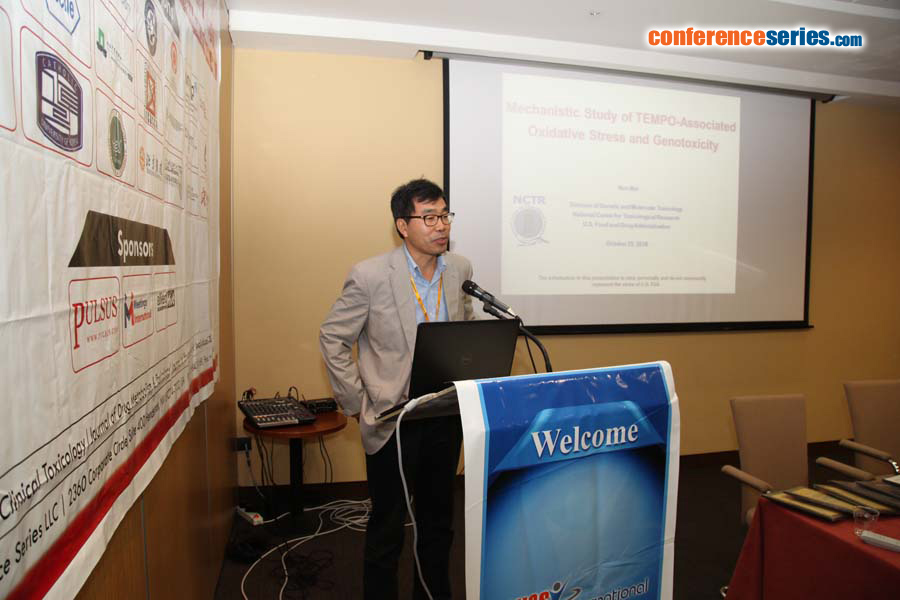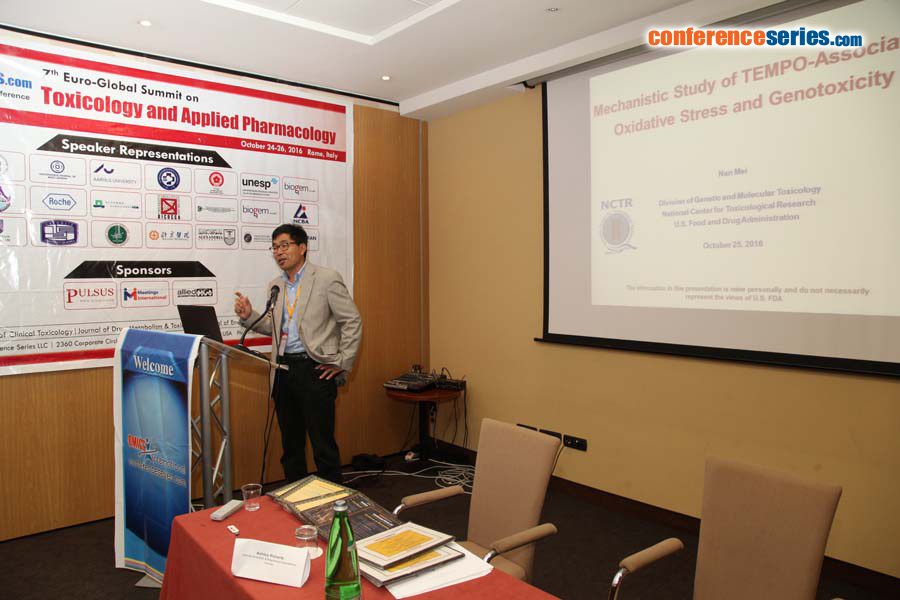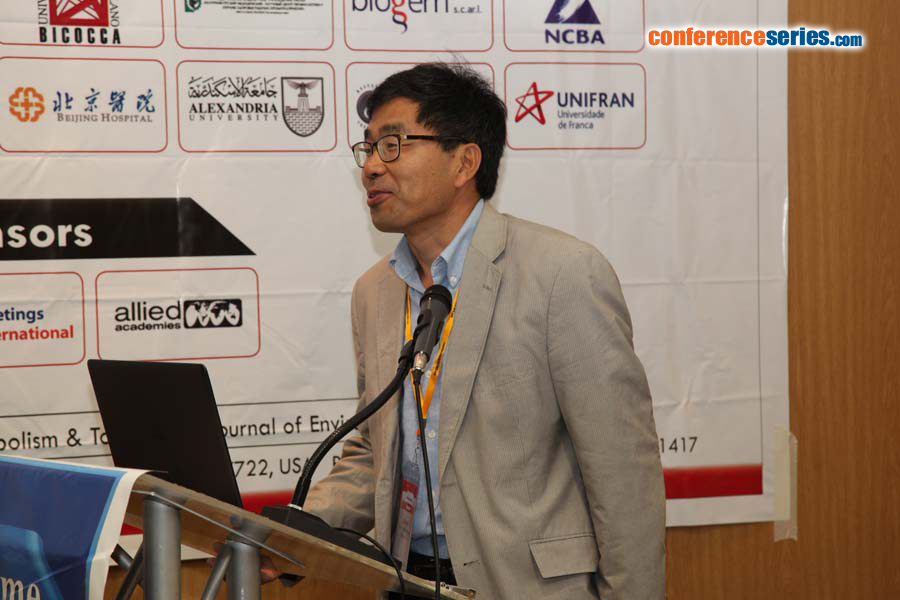Nan Mei
National Center for Toxicological Research, USA
Title: Mechanistic study of TEMPO-associated oxidative stress and genotoxicity
Biography
Biography: Nan Mei
Abstract
The biological consequences of exposure to piperidine nitroxides is a concern, given their widespread use in manufacturing processes and their potential use in clinical applications. Previously, we have demonstrated that TEMPO (2,2,6,6-tetramethylpiperidine- 1-oxyl), a low molecular weight free radical, can induce cytotoxicity and genotoxicity in mammalian cells. Extending this earlier work, the present study investigates the underlying mechanisms of TEMPO-associated oxidative stress and genotoxicity, particularly the roles of reactive oxygen species (ROS) and mitogen-activated protein kinase (MAPK) signaling. Our results demonstrate that TEMPO induced time- and concentration-dependent intracellular ROS production and glutathione depletion in mouse lymphoma L5178Y cells. TEMPO also induced apoptosis as demonstrated by increased caspase-3/7 activity, an increased proportion of annexin V stained cells, and decreased expression of anti-apoptotic proteins including Bcl-2, Bcl-xL and Mcl-1. N-acetylcysteine, a ROS scavenger, attenuated the ROS production and apoptosis induced by TEMPO. Moreover, Western blot analyses revealed that TEMPO activated γ-H2A.X, a hallmark of DNA damage, and c-Jun N-terminal kinases (JNK); a key member in the mitogenactivated protein kinase (MAPK) signaling pathway. Addition of SP600125, a JNK-specifi c inhibitor, blocked TEMPO-mediated JNK phosphorylation and also attenuated TEMPO-induced apoptosis. Th ese fi ndings indicate that TEMPO-induced apoptosis and toxicity are, at least in part, mediated by oxidative stress and activation of JNK in the MAPK pathway.





